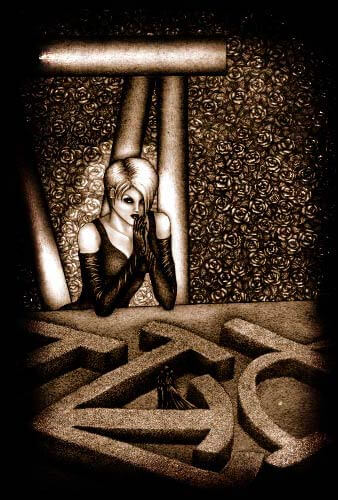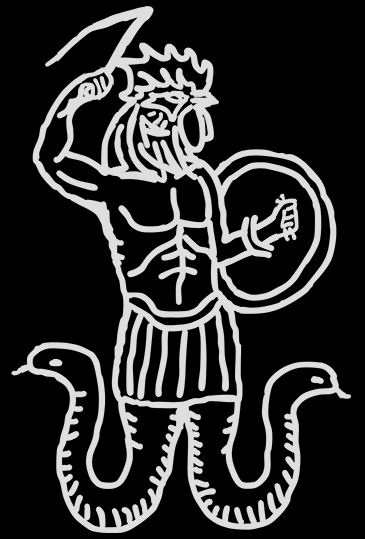Core Tarot Essentials
1. What is tarot?
A tarot deck is a 78‑card system steeped in centuries of history. Originally a 15th‑century Italian card game, occultists adopted it in the 19th century as a tool for self‑reflection and divination. Modern practitioners use tarot to explore personal narratives, symbolic archetypes, and pathways to insight. (Modern players still use it as a card game, too.)
2. Where did tarot originate?
Tarot began as the Italian game of trionfi in the mid‑1400s (later called tarocchi). Scholars debate its roots. Some tie it to early European playing cards; others speculate on Egyptian or Middle Eastern influences. Even the planet Venus has been suggested by channellers. But its documented origin lies in Renaissance Italy.
3. What is the structure of a tarot deck?
A standard deck splits into two parts:
- Major Arcana (22 cards): Also called trumps, these cards (The Fool through The World) map key stages and archetypal energies in life’s journey. Some consider the Fool to exist in its own category; this is debated.
- Minor Arcana (56 cards): Four suits (Wands, Cups, Swords, Pentacles) each contain ten numbered cards (pip cards) and four court cards (Page, Knight, Queen, King). These reflect daily influences, emotional states, and personal challenges.
4. How do tarot readings work?
Readings rely on a combination of symbolism, intuitive interpretation, and client context. After shuffling, cards are drawn and laid out in a spread: a pattern defining positions like significator, past, present, advice, or outcome. The reader synthesises imagery, suit meanings, and positional context to craft an insightful narrative. Divination relies on psychological modes like projection that would normally indicate unconscious manipulation; however, when used consciously, they become incredible tools.
5. What are tarot spreads, and how do they work?
Spreads are templates dictating card placement and meaning. Classic examples include:
- Three‑card spread: Past, Present, Future
- Celtic Cross: A ten‑card layout covering influences, challenges, subconscious factors, and outcome.
You can customise spreads to specific questions or use community favourites available on Tarotsmith.com.
6. What are reversals?
Reversals occur when a card appears upside‑down in the spread. They introduce nuance, suggesting blocks, oppositional forces, or internalised energies. Not every reader uses reversals; some prefer elemental dignities (card‑to‑card relationships) or upright‑only layouts.
7. What’s the difference between psychic tarot, occult tarot, and novelty decks?
- Psychic tarot: Emphasises intuition and channelling: cards as an antenna to the querent’s subconscious.
- Occult tarot: Built on esoteric systems (Golden Dawn, Qabalah, astrology), often with detailed correspondences.
- Novelty decks: Artistic or theme‑driven decks that may depart from classical symbolism. They’re fun and approachable but may require supplementary guides for deeper readings.
8. Can tarot really predict the future?
Tarot isn’t crystal‑ball magic. It highlights potential outcomes based on present conditions and offers psychological insights that clarify decisions. Think of tarot as a dynamic mirror reflecting your current trajectory and choices rather than a literal fortune‑teller.
9. How can I start reading tarot?
- Choose a deck that speaks to you.
- Learn basic card meanings through reputable guides or Tarotsmith’s study resources.
- Practise simple spreads daily. Journal your interpretations and track outcomes.
- Develop your intuitive voice by noticing which symbols resonate most strongly.
10. Which books or resources should I read?
- The Pictorial Key to the Tarot by A.E. Waite (1911)
- The Book of Thoth by Aleister Crowley (1944; revised editions)
- Understanding Aleister Crowley’s Thoth Tarot by Lon Milo DuQuette (2003)
- Online resources on Tarotsmith.com, Rider-Waite.com, and Crowley-Thoth.com. Read about Tarotsmith’s modern decks for more unique interpretations

Advanced & Esoteric Integration
11. Can I use tarot in ritual magic or meditation?
Absolutely. Tarot cards serve as potent focal points in rituals, meditation, and trance work. Visualise a card’s imagery, recite invocations or mantras aligned with its symbolism, and integrate the experience into your practice.
12. Is tarot connected to the Qabalah, astrology, or alchemy?
Many occult systems map Major Arcana to Qabalistic sephiroth, zodiac signs, and elemental correspondences. These layered associations deepen interpretive richness but aren’t mandatory. Find what resonates.
13. What does it mean to create your own tarot deck?
Custom decks are a form of personal grimoire. After an inner process, often involving meditation, journalling, or invocation, artists translate individual archetypes into original imagery. This deck then becomes a personalised oracle reflecting your spiritual journey.
14. What is the ‘Higher Function‘ of the tarot?
Beyond prediction, the Higher Function positions the deck as an alchemical tool for self-transformation: a soul‑journal in images. It guides the adept through inner initiation, mirroring stages of growth, shadow integration, and awakening.
15. What is shadow work, and how does tarot relate?
Shadow work involves uncovering and integrating repressed or disowned aspects of the psyche. Tarot cards act as mirrors, exposing hidden motivations, fears, and desires. By confronting these shadows through reading and reflection, you catalyse profound inner healing.
Critical Awareness & Ethics
16. What is cold reading?
Cold reading is a set of psychological techniques, observation, educated guesses, and feedback loops, used by unprincipled readers to fabricate accuracy. Ethical tarot practitioners prioritise client empowerment over scripted persuasion.
17. What is casing the mark?
Casing the mark refers to the subtle manipulation of a querent’s psyche during a reading. It exploits suggestibility by planting ideas or expectations. Tarotsmith promotes transparent readings that respect individual autonomy.
18. Are online tarot readings real or just random generators?
Even algorithmic shuffles can catalyse insight if approached with clear intention. While code may randomise card order, meaningful interpretation is a human skill. Tarotsmith’s automated readings pair algorithmic fairness with expert‑designed narratives to optimise relevance.
19. Can tarot be used to manipulate people?
Like any tool, tarot can be misused. A conscientious reader uses cards to illuminate options and foster self-knowledge, never to coerce or control.
Tools & Customisation
20. Can I make my own spreads?
Yes. You can do this with your own cards or revision your own card position meanings using the spreads on the site.
21. What’s the deal with reversals vs dignities?
- Reversals: Upside‑down cards adding nuance or resistance.
- Elemental dignities: Relationships between adjacent cards indicating harmony or tension.
Both systems have merits. Experiment to find your preferred method.
22. Are these spreads really random?
Physical shuffling introduces genuine randomness. Online, Tarotsmith uses randomiser algorithms to simulate shuffles, ensuring rawness and unpredictability.
23. Who created these decks and spreads on Tarotsmith?
Tarotsmith’s content is developed by experienced occultists, artists, and programmers collaborating to blend traditional wisdom with technology.
24. Can I get a personal reading through this site?
Not with a human reader. No, not unless you have an experienced friend who walks you through it. The site was designed to empower you to act as your own reader. You can do it. Go for it!
FAQs revised July 25, 2025
